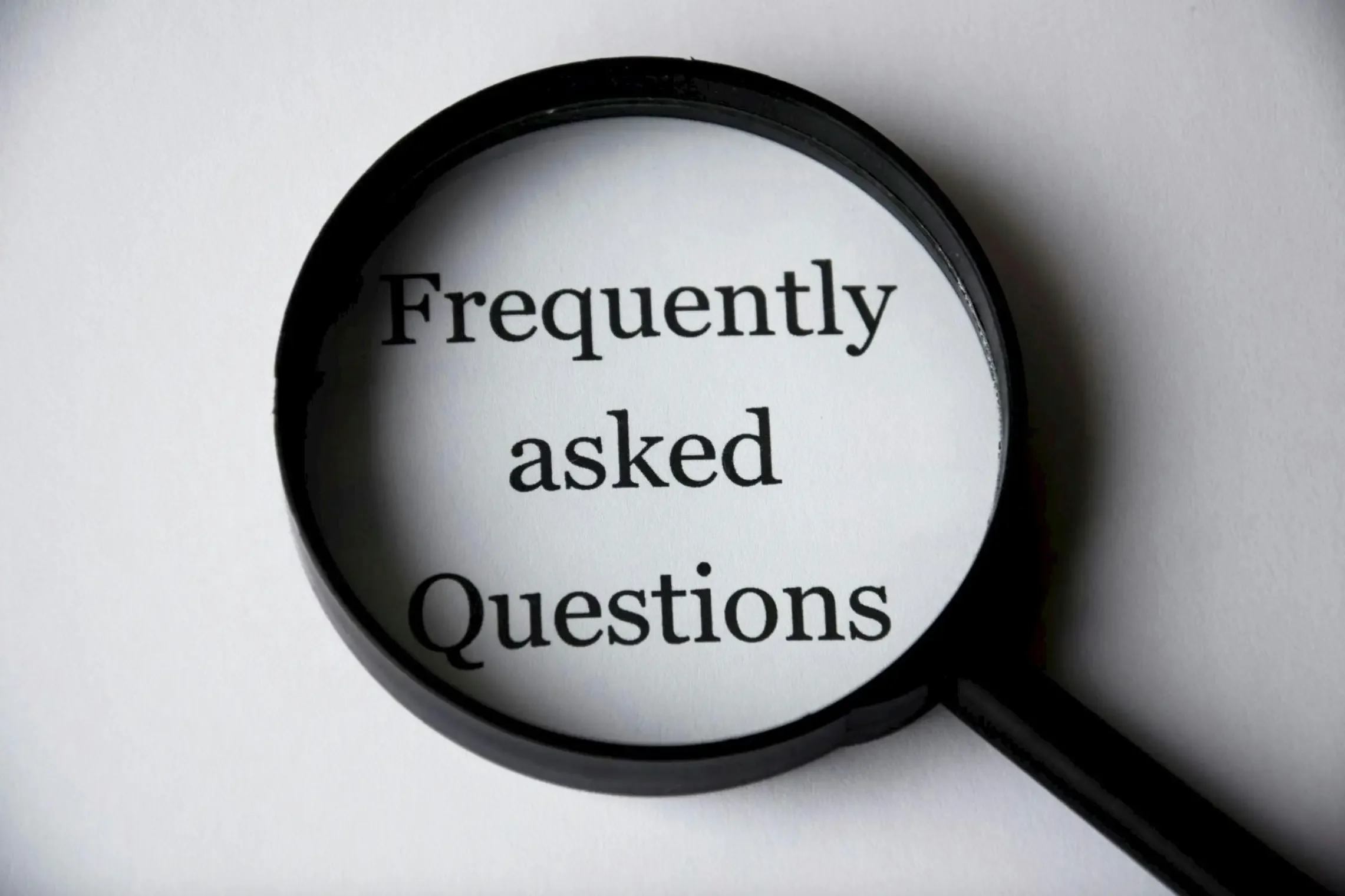High Functioning OCD Explained: 5 Hidden Signs You Shouldn’t Ignore
Key Takeaways
High functioning OCD may not always be obvious, as individuals often appear organized and successful while struggling with silent symptoms of OCD.
Excessive planning, reassurance seeking, perfectionism, difficulty with ambiguity, and hidden compulsions are key signs of high functioning OCD.
High functioning OCD can impact both personal and professional settings, affecting relationships, work, and daily routines.
Understanding these signs, their underlying causes, and the diagnostic and treatment processes is crucial for effective management.
Early intervention through professional diagnosis and treatment can significantly improve overall well being for those affected by OCD.
Defining Obsessive-Compulsive Disorder
Obsessive-Compulsive Disorder (OCD) is a mental health condition characterized by persistent, intrusive thoughts (obsessions) and compulsive behaviors aimed at reducing distress. Classified by the Diagnostic and Statistical Manual (DSM), OCD differs from general anxiety by the intensity and irrationality of these thoughts, which can disrupt daily functioning and overall health. Individuals with OCD may experience impulsivity and panic when resisting urges, with rituals interfering in daily life. While the exact causes are still studied, brain mechanisms related to emotion regulation are involved. Cognitive Behavioral Therapy (CBT) is an effective treatment that helps reduce compulsions and improve quality of life, often alongside support from healthcare providers and mental health professionals.
Common Misconceptions Surrounding OCD
Many people mistakenly equate Obsessive-Compulsive Disorder (OCD) with being overly clean or organized, but this stereotype overlooks the deeper emotional reality of the condition. While excessive hand washing and cleaning are known symptoms, high functioning OCD often involves subtle, internal rituals. Individuals may appear in control externally but struggle internally with fear, compulsions, and relentless worry. This disconnect can delay seeking help, as symptoms remain hidden behind a composed exterior. OCD isn’t about liking things “just so”; it’s about managing intrusive thoughts and anxiety through rituals that offer temporary relief but worsen distress over time. Ongoing research and therapy are vital to dispel myths and promote understanding, especially since OCD can co-occur with other mental health conditions.
Recognizing Key Symptoms of OCD
OCD symptoms vary widely among individuals. Some may exhibit overt rituals, while others demonstrate covert behaviors like mental counting or constantly rethinking decisions. Recognizing persistent obsessive thoughts and ritualistic behaviors is essential to understanding the disorder’s impact. Persistent and intrusive thoughts that repeatedly occur are a hallmark of OCD. These thoughts often center on themes such as contamination, violence, or symmetry, and are frequently driven by excessive fear of contamination, harm, or other perceived threats. For more information on OCD symptoms and treatment, you can visit the National Institute of Mental Health (NIMH) OCD page. Additionally, the International OCD Foundation provides valuable resources on understanding and managing OCD.
Understanding Compulsive Behaviors and Rituals
Compulsive behaviors in OCD are intense rituals performed to ease overwhelming fear or distress from obsessive thoughts. Examples include repeatedly checking locks, counting steps, or arranging items “just right” to neutralize anxiety. These rituals often feel urgent and non-negotiable, consuming significant mental energy and becoming mentally exhausting. If untreated, they can disrupt mood, impulse control, and treatment effectiveness. Therapy and support from qualified providers are essential to address these behaviors.
Potential Factors Contributing to OCD Development
Obsessive-Compulsive Disorder (OCD) develops from a mix of biological, environmental, and learned factors. Research highlights abnormalities in serotonin receptors and brain structures, especially in those with a family history of mental health disorders, increasing the individual's risk. Early childhood trauma, chronic stress, or physical injury can trigger or worsen symptoms. OCD impacts both mental and physical health, causing significant distress, fatigue, and other stress-related symptoms. Diagnosis involves a thorough evaluation by mental health professionals using clinical tools to distinguish OCD from related mental disorders. Early intervention with therapy and healthy coping strategies improves symptom management and overall well-being.
Biological Predispositions and Family History of OCD
Genetics play a key role in OCD, with studies showing that individuals with relatives affected by OCD or anxiety disorders have a higher likelihood of developing symptoms. Brain imaging reveals differences in areas controlling mood and compulsive behaviors, linked to serotonin imbalances. These biological factors affect the individual's ability to regulate obsessive thoughts and compulsive behaviors, often requiring support from mental health professionals for effective management.
Environmental Stressors and Traumatic Events Triggering OCD
Environmental stressors, such as trauma, loss, or major life changes, can activate or intensify OCD symptoms, especially in genetically predisposed individuals. These triggers contribute to significant distress, reinforcing compulsive behaviors as maladaptive coping mechanisms. Mental health professionals consider psychosocial history crucial in diagnosis and treatment planning.
Behavioral Learning and Conditioning in OCD
Compulsive behaviors often develop through conditioning, where mental acts or physical rituals provide temporary relief from anxiety caused by intrusive thoughts. This negative reinforcement cycle consumes mental energy and worsens symptoms over time. Recognizing this cycle is essential for mental health professionals to guide patients toward healthier coping strategies and symptom management.
Identifying 5 Signs You Might Have High Functioning OCD
High-functioning OCD refers to individuals who manage daily responsibilities and maintain personal and professional lives despite significant internal struggles with persistent obsessive thoughts, mental compulsions, and compulsive behaviors. These hidden compulsions and avoidance behaviors often cause mental fatigue and decreased quality of life, even though outwardly they may appear organized and successful. Recognizing these subtle signs is essential for effective symptom management and seeking professional help.
1. Excessive Planning and List-Making as an OCD Sign
Excessive planning and list-making, while often seen as traits of organization, can be a sign of high functioning OCD when driven by anxiety and fear. Individuals manage their daily responsibilities through these behaviors not just for efficiency, but as a coping mechanism to regulate distressing obsessive thoughts and prevent imagined catastrophes. This constant struggle to maintain control through rigid planning provides temporary relief but ultimately reinforces a cycle of anxiety and avoidance. Such compulsive behaviors consume significant mental energy, contributing to mental fatigue and reduced ability to adapt to change, highlighting the hidden struggles faced by those with high functioning OCD.
2. Reassurance Seeking in High Functioning OCD
Reassurance seeking is a common but often overlooked compulsion in high functioning OCD, where individuals repeatedly seek confirmation from others—such as friends, family, or health care providers—that everything is okay. While this behavior offers temporary relief from intrusive thoughts and excessive worry, it ultimately leads to significant internal distress and mental fatigue. The constant need for external validation can strain personal relationships, making it difficult to maintain connections as loved ones may feel overwhelmed or emotionally distant. Despite an outward appearance of control, this compulsive reassurance seeking reflects a persistent struggle with anxiety and the fear of losing control.
Although reassurance seeking may seem harmless, it reinforces the obsessive-compulsive cycle and consumes substantial mental energy, contributing to a decreased quality of life. Mental health professionals recognize this invisible behavior as a significant challenge impacting daily functioning and emotional well-being. Effective treatment plans often include cognitive behavioral therapy and exposure therapy to help individuals break free from this cycle, develop healthy coping mechanisms, and regain trust in their own judgment without relying on external reassurance.
3. Perfectionism That Impedes Task Completion: An OCD Indicator
Perfectionism in high functioning OCD goes beyond healthy ambition, becoming a compulsive behavior driven by obsessive thoughts and emotional distress. Individuals set unrealistically high standards and often feel anxious or panicked when things aren’t “just right.” This relentless pursuit of flawlessness can lead to avoidance, indecision, and difficulty completing daily responsibilities, draining mental energy and affecting both mental and physical health. Recognizing this distinction is crucial for mental health professionals to develop treatment plans focused on symptom management and healthy coping strategies.
Many with high functioning OCD mask procrastination as productivity, spending excessive time rechecking work or delaying tasks due to fear of mistakes. This internal struggle with obsessive thoughts and mental rituals often leads to burnout and decreased quality of life, despite an outward appearance of control and success. Effective therapies like cognitive behavioral therapy and exposure and response prevention can help individuals break these patterns, reduce internal distress, and restore balance in their personal and professional lives.
4. Difficulty With Uncertainty and a Need for Control
For individuals with high functioning OCD, intolerance of uncertainty can cause intense anxiety and emotional distress that disrupt daily routines and overall well-being. This need to eliminate all ambiguity often leads to compulsive behaviors such as repeated checking, over-researching, or seeking reassurance, even when risks are minimal. These obsessive doubts affect decisions and plans, causing indecision, regret, and mood instability. Managing these intrusive thoughts and compulsions consumes significant mental energy, contributing to mental fatigue and reduced quality of life. Without early intervention and support from mental health professionals, this cycle can worsen, severely impacting daily responsibilities and personal and professional lives.
The relentless pursuit of control acts as a coping mechanism for the discomfort caused by uncertainty. Rigid routines, excessive planning, and avoidance provide temporary relief but reinforce the belief that uncertainty equals danger. This pattern leads to chronic overanalysis and avoidance, undermining self-confidence and increasing internal distress. Effective treatment plans, including cognitive behavioral therapy and exposure therapy with response prevention, help individuals break free from these cycles, develop healthy coping strategies, and improve symptom management, enhancing overall well-being and daily functioning.
5. Hidden Compulsions or Avoidance Behaviors
Not all symptoms of high functioning OCD are visible. Many compulsive behaviors are mental acts or subtle rituals performed quietly to manage intense fear and intrusive thoughts. These hidden compulsions, like internal counting or mental checking, consume mental energy and cause fatigue and anxiety. Avoidance behaviors, such as steering clear of anxiety-provoking situations or procrastinating, often go unnoticed but can limit daily functioning and personal and professional lives. Keeping these struggles secret leads to isolation, shame, and reduced quality of life. Recognizing these invisible symptoms is essential for mental health professionals to provide accurate diagnosis and effective treatment plans addressing both overt and covert aspects of OCD.
The Process of Diagnosing OCD
Diagnosing Obsessive-Compulsive Disorder (OCD) requires a thorough evaluation by qualified mental health professionals due to its overlapping symptoms with other mental disorders like anxiety and depression. Accurate diagnosis involves clinical interviews and standardized tools such as the Yale-Brown Obsessive Compulsive Scale (Y-BOCS), which assess symptom severity, intrusive thoughts, compulsive behaviors, and mental acts. This detailed assessment helps distinguish OCD from similar conditions and ensures that individuals receive personalized treatment plans tailored to their specific needs and goals.
Because many individuals with high functioning OCD mask their internal struggles, subclinical obsessions and compulsivity can be overlooked, leading to delays in seeking professional help. Early intervention is crucial to prevent worsening symptoms and mental fatigue caused by the constant battle with obsessive thoughts and compulsive behaviors. An accurate diagnosis validates the individual's experience and guides effective symptom management through evidence-based therapies like cognitive behavioral therapy (CBT) and exposure and response prevention (ERP), often combined with selective serotonin reuptake inhibitors (SSRIs) when appropriate.
This comprehensive approach supports improved overall well-being and helps individuals break free from the relentless pursuit of control that characterizes high functioning OCD. By identifying the disorder early and implementing tailored treatment plans, mental health professionals can address both the emotional and behavioral aspects of OCD. This ultimately empowers individuals to regain control over their lives, reduce significant distress, and improve functioning in both personal and professional settings.
Effective Treatment Approaches for OCD and Related Anxiety
Treating OCD—especially high functioning OCD—requires a strategic, evidence-based approach tailored to each patient’s unique experience. Effective treatment plans often combine psychotherapy and medication to address both cognitive and biological aspects of the disorder. Therapy helps manage emotional patterns and compulsions, while medication regulates brain chemistry and mood. With early intervention and ongoing support from a health care provider, many patients experience significant relief and improved quality of life. Advances in neuroscience and genetics continue to support the efficacy of these treatments, offering hope for long-term symptom management.
Cognitive Behavioral Therapy for OCD Management
Cognitive Behavioral Therapy (CBT) is a well-established and effective treatment for managing OCD. It helps individuals identify and challenge distorted thought patterns that drive obsessive fears and compulsive behaviors, promoting emotional resilience. By reframing thinking and developing healthier coping strategies, CBT reduces anxiety and improves overall well-being. This therapy is especially beneficial for those with high functioning OCD, where compulsions may be subtle but impactful. CBT is widely recommended by major mental health organizations due to its strong evidence of efficacy.
Exposure and Response Prevention ERP for OCD
Exposure and Response Prevention (ERP), a specialized form of exposure therapy within CBT, is the gold standard for treating OCD. It involves gradually exposing patients to their fears in a controlled setting while helping them resist compulsive behaviors. This retrains the brain’s emotional response, reducing panic and avoidance over time. Though initially challenging, ERP leads to lasting improvements by decreasing the frequency of obsessions and compulsions when guided by experienced health care providers. For more details, you can visit the International OCD Foundation's page on ERP.
Medication Options for Reducing OCD Symptoms and Anxiety
For many individuals, therapy alone may not suffice, especially when symptoms are severe. Selective Serotonin Reuptake Inhibitors (SSRIs) are commonly prescribed to regulate serotonin levels in the brain, addressing neurotransmitter imbalances that contribute to obsessive thoughts and emotional dysregulation. Sometimes, additional medications help manage symptoms like panic or co-occurring conditions such as generalized anxiety disorder (GAD). While responses vary, SSRIs have strong evidence supporting their effectiveness in treating OCD, and ongoing communication with healthcare providers ensures optimal outcomes. For more information on SSRIs, you can visit the National Institute of Mental Health (NIMH) page on SSRIs.
The most effective treatment plans often combine medication and therapy to address both biological and psychological aspects of OCD. Medication works to balance brain chemistry, while therapy—such as Cognitive Behavioral Therapy (CBT) and Exposure and Response Prevention (ERP)—helps patients challenge obsessive thoughts and reduce compulsive behaviors. This integrated approach provides a holistic path to recovery, tailored to individual needs and adjusted over time for optimal symptom management and improved overall well-being.
Living Well With OCD and Managing Anxiety
Living with high functioning OCD can be challenging, but with the right tools and support, individuals can manage symptoms and lead fulfilling lives. Developing healthy coping strategies, such as relaxation techniques, mindfulness meditation, and lifestyle habits like regular exercise and balanced sleep, helps reduce anxiety and mental fatigue caused by obsessive thoughts and compulsive behaviors. These approaches, combined with guidance from mental health professionals and evidence-based therapies like cognitive behavioral therapy (CBT) and acceptance and commitment therapy (ACT), promote emotional resilience and improved daily functioning.
Building a strong support system is also vital in managing high functioning OCD. Support from friends, family, therapists, or peer groups provides emotional validation and practical assistance, fostering a supportive environment that reduces internal distress and encourages healthy coping mechanisms. Mindfulness practices help individuals observe intrusive thoughts without engaging in mental acts or repetitive behaviors, leading to less anxiety and better symptom management. Together, these strategies empower those with high functioning OCD to break free from the relentless pursuit of control and improve their overall well-being.
Supporting Someone With OCD and Understanding Their Anxiety
Supporting a loved one with high functioning OCD requires patience, education, and emotional awareness. It involves understanding that obsessive compulsive disorder is a complex mental health condition characterized by intrusive thoughts and compulsive behaviors that are not voluntary but responses to significant internal distress. Being informed about the symptoms, causes, and treatment options—such as cognitive behavioral therapy (CBT), exposure and response prevention (ERP), and selective serotonin reuptake inhibitors (SSRIs)—can help you provide compassionate support without enabling compulsions. Avoiding reassurance or participation in rituals prevents reinforcing the OCD cycle, while encouraging healthy coping strategies and professional help promotes long-term mental and physical health.
Encouraging professional diagnosis and treatment is vital, as early intervention can improve symptom management and overall well-being. Mental health professionals can tailor treatment plans to address both the emotional and behavioral aspects of OCD, helping individuals break free from the relentless pursuit of control and reduce mental fatigue. A supportive environment that balances empathy with healthy boundaries fosters recovery and improves quality of life in both personal and professional settings, making a significant difference in managing high functioning OCD.
Final Thoughts
High functioning OCD can mask itself through behaviors that appear disciplined and organized, yet the internal struggle remains significant. Recognizing signs like excessive planning, constant reassurance seeking, debilitating perfectionism, an inability to tolerate uncertainty, and hidden compulsions is crucial for early intervention. A proper diagnosis paired with comprehensive treatment methods—including CBT, ERP, and medication—can empower those affected to manage their symptoms effectively. With empathy and professional support, individuals with high functioning OCD can live balanced, fulfilling lives.
Frequently Asked Questions
Q: What distinguishes high functioning OCD from regular OCD?
A: High functioning OCD involves symptoms that are less noticeable externally because individuals often excel in their daily routines, yet they experience significant internal distress from obsessive thoughts and compulsions.
Q: Can high functioning OCD affect professional and academic performance?
A: Yes, despite appearing successful, the internal stress and time consumed by compulsions can hinder productivity and lead to burnout over time.
Q: How important is professional diagnosis for OCD?
A: Professional evaluation is crucial since it accurately distinguishes OCD from other conditions and guides the most effective treatment approach.
Q: Are there effective treatments available for high functioning OCD?
A: Effective treatments include Cognitive Behavioral Therapy, Exposure and Response Prevention, and medication. Combining these methods helps manage both obsessions and compulsions.
Q: How can family and friends support someone with high functioning OCD?
A: Educating themselves about the disorder, providing compassionate support without enabling compulsions, and encouraging professional help can significantly improve the well-being of someone with high functioning OCD.






